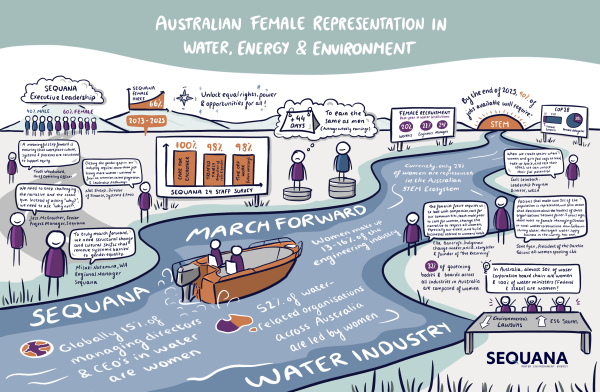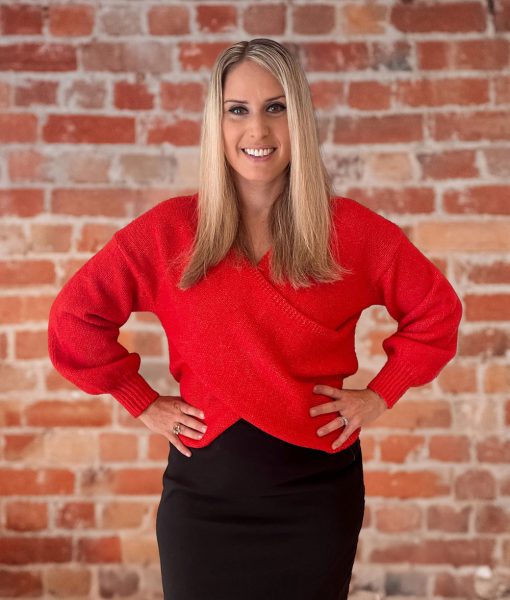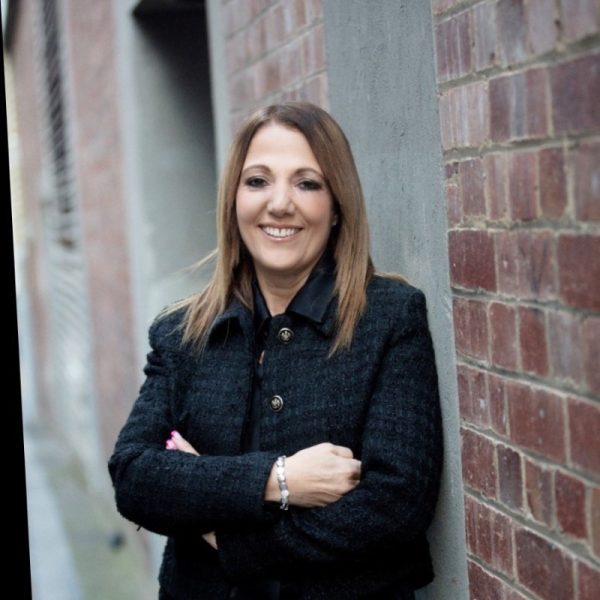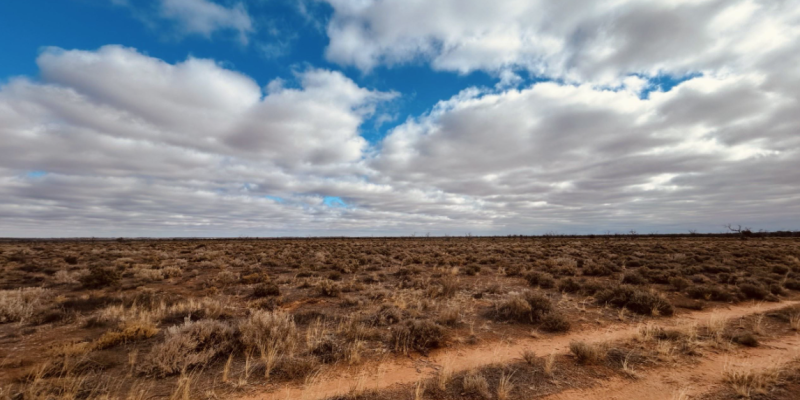
This year’s UN theme “March Forward: For ALL Women and Girls” couldn’t be more relevant, with a clear vision to continue to empower the next generation – youth, particularly young women and adolescent girls – as catalysts for lasting change. Together, we can be the generation to close the gap to achieve gender equality.
Sequana’s vision is to align with the international movement’s achievements. The company perpetuates an approach that treats people fairly regardless of their gender while reinforcing policies that bridge the gender gaps. As an example, the company has increased female hires by 66% thanks to new policies enhancing equal employment opportunity and growth since 2023. As of September 2025, the Sequana Executive Leadership team has reached a 60-40% female-to-male ratio.
Over the past five days, Sequana has sparked conversation to raise awareness of women in the water, environment and STEM industries, shining the light on their significant roles and achievements, as well as the opportunities for us all to do more.
We want to ‘show, not just tell’ and to do this, we have partnered with designer and illustrator, Elise Motalli to visually synthesise all of these ever-important statistics and insights, turning what is – at times – complex information into bite-size nuggets that are digestible, engaging, and shareable.

© Elise Motalli
We are dedicated to creating an environment where women can thrive, advance, and lead. This takes shape in structured mentorship programs, leadership development, and flexible work arrangements to support women at every stage of their careers. Our initiatives include the Future Leader Forum, Social Impact & Belonging committee, and tailored learning opportunities amongst other initiatives. By fostering a culture of inclusion, mentorship, and opportunity, we ensure women can grow, innovate, and shape the future.
To wrap up this week of inclusive conversations with female leaders in the water, energy and environment sectors, we are featuring Danya Maguire, Head of People & Culture at Sequana, alongside Mary Barry, CEO & Founding Director, CircularEco PTY LTD and CircularEco Asia Pacific Collective. Danya shares her thoughts on how progress and change can be more than just encouraged within a workplace while Mary insists that to reach equal rights, systems still need to be reshaped.
 Danya Maguire, Head of People & Culture
Danya Maguire, Head of People & Culture
What does “March Forward: For ALL Women and Girls” mean to you?
The 2025 International Women’s Day theme, March Forward: For All Women and Girls, is a powerful reminder that while progress has been made, there is still work to do to achieve true gender equality. To march forward is to stand tall, raise our voices, and continue to strive for a future where every woman and girl has the opportunities, rights, and support they deserve. It’s not just about us – it’s about shaping a gender-equal world for generations to come.
How do you think we need to march forward to unlock equal rights, power and opportunities for all and a feminist future where no one is left behind
Progress starts with action. In our workplaces, we can ask: Are our policies and processes truly equitable? Do women have access to the support they need – mentorship, sponsorship, leadership development, and networking opportunities? If not, we have the power to drive change by advocating for improvements that foster inclusion and growth.
Beyond the workplace, we can create communities that uplift and empower women, ensuring that no one is left behind. Gender equality isn’t just a professional goal – it’s something we embed in our daily lives. As a mother of two daughters, I remind them every day that they can achieve anything. Whether they dream of becoming scientists, leaders, or innovators, I encourage them to aim high and never let societal barriers define their potential.
How can we empower the next generation to be catalysts for lasting change?
I believe the key to lasting change is creating strong support systems – mentorship programs, sponsorship networks, and learning opportunities that help women and girls thrive. When we invest in the next generation, we equip them with the confidence and resources to challenge barriers and lead the way toward a more equitable future.
In our industry, how do we close the gap to achieve gender equality?
Addressing gender imbalance in our industry means actively removing barriers to women’s success. It means ensuring equal pay, increasing representation at all levels, and fostering an inclusive culture where women can lead, innovate, and excel. It’s about more than policy – it’s about creating a workplace where every woman feels valued, supported, and empowered.
What are some of your own experiences in the industry?
Throughout my career, one of my biggest challenges has been achieving a meaningful work-life balance – ensuring I can be both a dedicated professional and a present parent to my daughters. When I joined Sequana, I knew I was making a career decision that aligned with my values, and I can confidently say it was one of the best choices I’ve made.
At Sequana, I have the flexibility to be there for my daughters when it matters most—whether it’s school assemblies, sports carnivals, drop-offs, or pickups—while also growing in my career. The culture here is one of true support and understanding, where balancing work and family isn’t just accepted; it’s encouraged. I feel incredibly fortunate to be part of a workplace that genuinely values its people.
Sequana is committed to setting its people up for success. Our Sequana Academy offers curated Learning & Development programs led by professional development coaches, covering essential consulting and leadership skills. Through this, we also have access to:
- Future Leader Forum – Supporting early-career professionals and new team members
- Soft Skills Development – Essential skills development to support the team personally and professionally
- One-on-One Professional Development Coaching – Personalised support to help us grow and thrive
- Consulting Training & Models – Practical frameworks that strengthen our day-to-day work
- Mentorship Program – Paired mentor/mentee groups based on technical expertise (mentor) and area of interest (mentee).
This investment in learning has significantly shaped my professional growth and continues to fuel my passion for continuous development.
 Mary Barry, CEO & Founding Director, CircularEco PTY LTD and CircularEco Asia Pacific Collective, Founding Director, Women of Offshore Wind (WOW), Co-Chair, Subsea Energy Australia (SEA), Winner of Subsea Business Awards for Innovation in Energy Transition.
Mary Barry, CEO & Founding Director, CircularEco PTY LTD and CircularEco Asia Pacific Collective, Founding Director, Women of Offshore Wind (WOW), Co-Chair, Subsea Energy Australia (SEA), Winner of Subsea Business Awards for Innovation in Energy Transition.
What does “March Forward: For ALL Women and Girls” mean to you?
For me, “March Forward: For ALL Women and Girls” is about more than just equality, it is about creating space, breaking barriers, and reshaping systems to work for everyone. It is about how we approach situations, making safe spaces where needed, and recognising that change is not about one singular solution, but rather a continuous evolution of ideas, structures, and opportunities. Marching forward is not just about challenging norms, it is about rewriting them, ensuring that the industries shaping our future are designed for inclusivity from the start. I have seen firsthand, working across Australia, the UK, the Middle East, and the Asia-Pacific, how different societies approach gender equity.
Some have policies in place that work tremendously well, where it doesn’t matter what gender you are, but others fail in implementation and others lack formal structures yet foster strong, community-led inclusiveness. There is no single right or wrong way, but how we approach these challenges is what truly matters.
At CircularEco and CircularEco Asia Pacific Collective, we are committed to embedding gender equality into the way industries evolve. Marching forward means:
- Rewriting industry norms: Shifting from industries with outdated and perceptions to an inclusive, diverse, and collaborative approach.
- Embedding change at every level: Gender equality must be built into early education as CircularEco is a driver of this, hiring policies, leadership succession, and investment strategies.
- Recognising intersectionality: True progress acknowledges that gender equality is not a standalone issue race, socioeconomic status, disability, and cultural background all shape experiences and access to opportunity.
How do we unlock equal rights, power, and opportunities for all?
We must go beyond pledges and policies, progress needs accountability, measurable outcomes, and workforce transition strategies that ensure long-term impact.
- Inclusive Leadership: Women must not only be in the room, but they must also be heard, valued, and in leadership roles shaping decision-making.
- STEAM Over STEM: Encouraging multidisciplinary thinking by integrating the Arts into STEM makes these industries more accessible, innovative, and appealing to a wider range of talents.
I believe that unlocking equal rights extends beyond policies, it is about the environments we cultivate. True progress is shaped by how we engage in discussions, how we create space for diverse perspectives, and how we empower all voices to contribute to the future. By fostering safe, inclusive spaces in leadership, workplaces, and industry-wide conversations, regardless of gender or identity, we can drive real, lasting change that transforms industries for the better.
How can we empower the next generation as catalysts for lasting change?
- Early Exposure: It’s crucial to begin fostering inclusivity and equal opportunity from an early age, involving both young boys and girls. In particular, girls and young women need to see visible pathways into technical, engineering, and leadership roles through mentorship, real-world industry experiences, and strong female representation. Equally, it’s essential to involve young boys in this journey as well, breaking down traditional gender roles early on and encouraging them to see leadership, innovation, and technical skills as qualities that belong to everyone, regardless of gender.
- Education Reform: Traditional STEM narratives must evolve. By integrating STEAM, we foster creativity, problem-solving, and innovation making careers in energy, sustainability, and technology more accessible. We encourage critical creative thinking, such powerful concepts that have the potential to make an impact. We directed and produced a film around STEAM – ENGAGE LEARN TRANSFORM that represents one of the many ways this can be integrated into societies and in this instance schools.
- Real-World Role Models: I have always believed that representation matters. Throughout my career, I have been surrounded by inspiring women and men, but I know many do not have access to these role models. That must change. We cannot be what we cannot see.
It is extremely important to invest in education, research, and workforce transition programs to ensure that the next generation is equipped to lead in sustainability, clean energy, and circular economy industries.
In our industry, how do we close the gender gap?
- Shift Hiring and Retention Policies: Diversity must extend beyond hiring into long-term leadership and career development pathways.
- Normalise Flexible Work and Leadership Development: The energy transition and circular economy industries must embrace modern workforce models that allow diverse talent to thrive, regardless of gender or identity.
- Build Industry Alliances: Gender equality is not one organisation’s challenge to solve, it requires collaboration across industry, communities, government, and education.
What are some of your own experiences in the industry?
My journey in the industry has been both unique and fortunate. My father worked in shipping, and my first job was in a shipping company, giving me early exposure to male-dominated environments. I have always been aware that my experience is not the norm for many women entering these fields. Working in energy, infrastructure, and circular economy transformation, I have encountered obstacles, but I have also been surrounded by forward-thinking individuals who see the value of diversity. However, true change is not about forcing diversity, it is about embedding it organically and systemically.
At CircularEco and CircularEco Asia Pacific Collective, we recognise that there is no right or wrong way to approach diversity, it is about creating spaces where people feel supported, valued, and encouraged to lead. Some of the most effective changes I have seen were not through rigid policies but through cultivating workplaces and leadership structures that actively make space for different perspectives.
A passion of mine has been STEAM education—ensuring that the Arts are integrated into STEM, creating more inclusive, creative, and multidisciplinary pathways into these industries. I strongly believe that if we reshape education, we reshape who sees themselves as part of these industries. To illustrate this, at CircularEco and CircularEco Asia Pacific Collective, we have created a short film showcasing how STEAM education can be embedded from the foundational years, shifting perceptions and inspiring action.
At the core of all of this is a simple but powerful truth: there is no perfect roadmap to gender equality, only how we choose to move forward, how we make space for others, and how we challenge outdated norms while creating safe environments for progress. I have seen the power of diverse leadership, and I know that by working together, supporting the next generation, and challenging outdated norms, we can truly March Forward, for ALL women and girls.
Learn more about Mary Barry here.
Statistics from the Infographic:
SEQUANA
- Since 2023, Sequana has increased female hires by 66%
- Today, the Sequana Executive Leadership team has a 60-40% female-to-male ratio.
Great Place to work – 2024 survey results
- 100% – People care about each other here
- 98% – People are treated fairly regardless of their gender
- 98% – I am able to take time off work when I think it’s necessary.
INDUSTRY
Source: Women in Water
Global statistics on women in the Water industry:
- 15% of Managing Directors / CEOs in water globally are women.
Global statistics on women’s recruitment in the Water industry show that fewer women have been recruited to water institutions in the past year:
- 20% of all workers recruited are women
- 22% of engineers recruited are women
- 24% of all managers recruited are women.
Source: Study Australia
National Statistics on women in STEM, Australia:
- By 2025, 90% of jobs available will require STEM skills. Currently, only 27% of women are represented in the Australian STEM ecosystem, presenting substantial growth potential.
Source: Workplace Gender Equality Agency (WGEA)
National data on the composition of governing bodies/boards in Australia:
- 32% of women make up the composition of governing bodies/Boards.
- At the COP28 climate talks in 2023, only 15 out of 140 speakers were women, and only 38% of party delegation members were women.
- There is evidence that increasing the numbers of women in business and industry has financial as well as environmental benefits. Boards with greater gender diversity experience significantly fewer environmental lawsuits and receive higher scores on ESG (Environmental, Social and Governance) performance rankings. Yet women hold just one in four executive leadership positions in ASX300 companies. At the current rate of progress, it will take a century for women to constitute 40% of CEO positions among ASX200 companies.
- Women are only 16% of Australia’s STEM skilled workforce and on average women in the professional, technical and scientific services industry earn 23.7% less than men. Within STEM research, women are 52% of the lowest rung of researchers and 23% of the highest rung. Similarly in STEM organisations, women are only 28% of managers and 8% of CEOs or Heads of Business.


